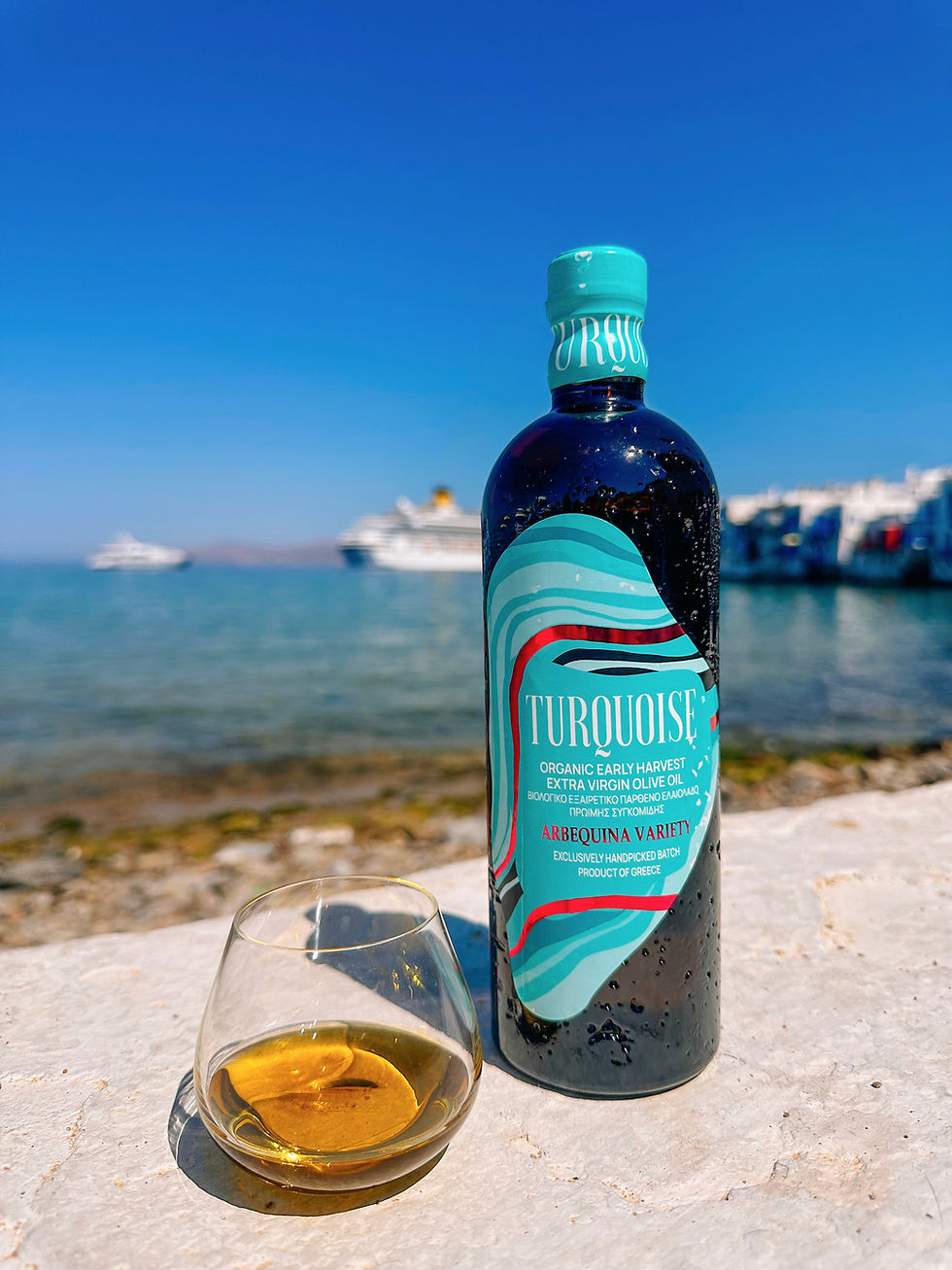Is the Acidity of Olive Oil the most important quality criterion?
- Mykonos Olive Oil Tasting

- Jul 11, 2022
- 3 min read

The acidity of the olive oil indicates the condition of the olive fruits from which the olive oil was produced. The healthier the olives the lower the acidity of the olive oil.
The oil is naturally generated within the olive fruit forming triglycerides. Each triglyceride is a package made up of three fatty acids linked by a molecule called glycerol.
If the link between glycerol with the three fatty acids is weak it breaks and set free the three fatty acids, and consequently, the olive oil starts degrading. Acidity measures how much of these free fatty acids are in the olive oil; therefore, acidity is a general indicator of the quality of virgin olive oils.
Actually, acidity measures the amount of free fatty oleic acid, the most abundant in olive oils. It is the rate in weight of the free oleic acid over the total amount of olive oil. These fatty acids are "released" only when the olive fruit is damaged (bruised, overripe) or attacked by the olive fly, fungi like gloeosporium, various bacteria, etc. If the olives are healthy, fresh and milled immediately after harvest, the fatty acid chains do not break and the acidity remains low (0.1-0.3%). The production of free fatty acids is due to the lipolytic action of the enzyme lipase, which is found in the olive fruit. This action takes place mainly before the extraction of olive oil and therefore the acidity changes very shortly after its extraction from the olive fruit.
The acidity of olive oil can be detected only with chemical analysis and not with tasting; it is not perceivable on the palate. We should not confuse the acidity of olive oil with the acidic pH or the spicy taste of olive oil. Acidity is an important quality criterion but not the one that determines if olive oil is extra virgin. The priority is on the sensory analysis carried out by a panel of professional tasters. It can be possible for olive oil with low acidity to have a serious sensory defect like winey, musty, fusty, rancid, etc. In that case, if the tasters sense the defect (even in a very low intensity) the olive oil cannot be categorized as Extra Virgin, even if chemical analysis shows acidity below 0,8%. Maximum acidity levels according to the type of olive oil: Extra virgin olive oil: Its acidity level must be less than or equal to 0,8%. Virgin olive oil: Its acidity should be less than or equal to 2%. Refined olive oil is a mixture of refined lampante with virgin olive oil. Its acidity should be less than or equal to 1%. All virgin oils with acidity levels over 2% are classified as lampante (non-edible). Never forget: Since there are many mislabeled olive oils in the market, the only way to protect yourself from fraud is to learn how to taste olive oil. In that case, you will be able to tell if the olive oil you are tasting has a defect or not, meaning if it is Extra Virgin or not.
Learning to taste, select and pair olive oil with food is one of the most valuable pieces of knowledge that you can offer to yourself since olive oil is not only a main culinary ingredient consumed every day but a unique & precious health, beauty & wellness elixir (only when it is of high quality!).
Attend an olive oil tasting seminar and change your life forever!





Comments